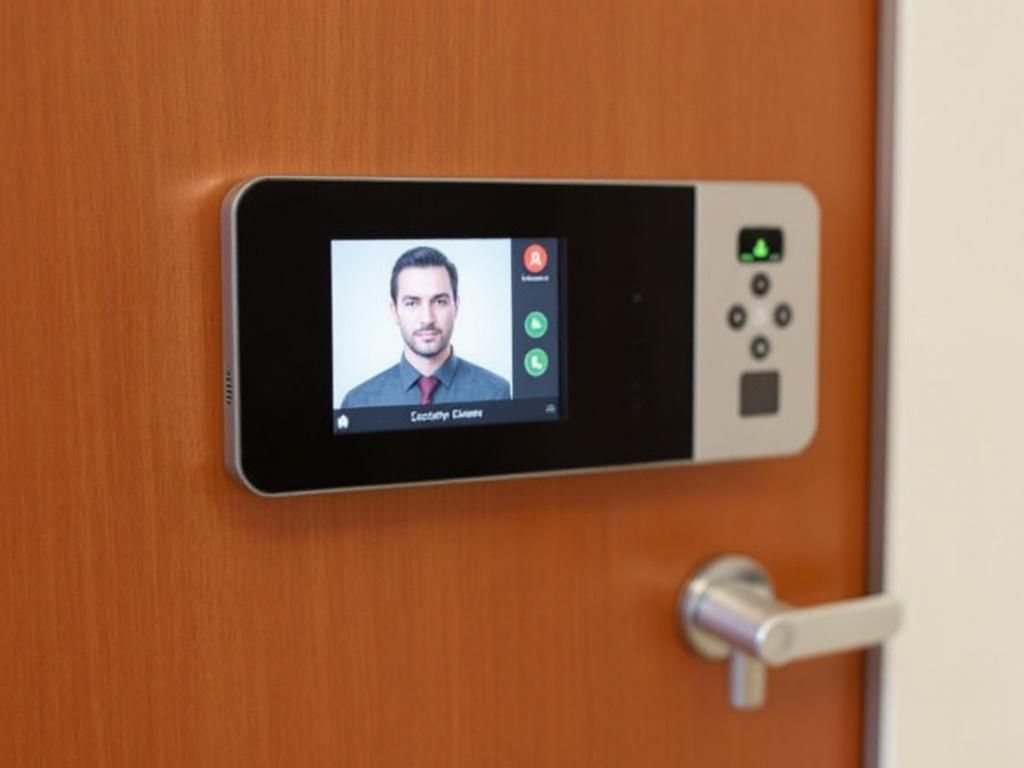In today’s rapidly evolving technological landscape, security has become a paramount concern for organizations and individuals alike. Among the various innovations in security technology, facial recognition stands out as a transformative solution. This technology not only enhances access control systems but also addresses various issues related to security and convenience. With increasing capabilities and applications, facial recognition innovations are reshaping how we secure our environments.
Understanding Facial Recognition Technology
Facial recognition technology uses biometric software to identify a person by analyzing their facial features. This process can be divided into several key stages:
- Image Capture: A photograph or video of the subject is taken.
- Face Detection: The system identifies and focuses on the face within the image.
- Feature Extraction: Unique features of the face, such as the distance between eyes and the shape of the jawline, are analyzed.
- Face Recognition: The extracted data is compared against a database of known faces to determine a match.
Applications of Facial Recognition Technology
The applications of facial recognition are vast and varied, ranging from security to convenience. Some of the key sectors utilizing this technology include:
- Law Enforcement: Used for identifying criminals and missing persons.
- Banking: Facilitating secure transactions and identity verification.
- Healthcare: Enhancing patient identification and data security.
- Retail: Personalizing customer experiences and preventing theft.
- Workplace Security: Controlling access to sensitive areas and ensuring only authorized personnel enter.
Innovative Features in Modern Facial Recognition Systems
Modern facial recognition systems are evolving with advanced features that make them more accurate, reliable, and user-friendly. Here are some of the notable innovations:
1. 3D Facial Recognition
Unlike traditional 2D systems that can be tricked by photos or masks, 3D facial recognition measures the contours of the face in three dimensions. This added layer of security increases accuracy and reduces false positives.
2. Deep Learning Algorithms
With the advent of artificial intelligence, deep learning algorithms are being integrated into facial recognition systems. These algorithms improve their ability to learn from vast amounts of data, increasing recognition accuracy over time.
3. Liveness Detection
Liveness detection refers to the system’s ability to determine whether the face being scanned is from a live person rather than a photograph or video replay. This feature is crucial for preventing spoofing attacks.
4. Mobile Integration
As smartphones become central to daily life, mobile integration of facial recognition technology is gaining traction. This allows users to unlock their devices, approve transactions, and access applications securely using their facial biometrics.
Challenges and Ethical Considerations
While facial recognition technology offers numerous benefits, it also presents challenges and ethical dilemmas that must be addressed:
1. Privacy Concerns
The use of facial recognition technology raises significant privacy issues. Individuals may be unaware that their images are being captured and stored, leading to potential violations of privacy rights.
2. Bias and Accuracy
Studies have shown that some facial recognition systems exhibit bias, particularly against people of color and women. This can lead to inaccuracies and reinforce systemic discrimination. Addressing bias in training data is crucial for equitable implementation.
3. Regulatory Compliance
As governments introduce regulations surrounding the use of biometric data, organizations must ensure compliance to avoid legal repercussions. Understanding regional laws related to data protection and privacy is essential.
Best Practices for Implementing Facial Recognition Innovations
To harness the benefits of facial recognition technology while minimizing risks, organizations should follow these best practices:
1. Conduct a Thorough Risk Assessment
Before implementation, organizations should assess the potential risks associated with facial recognition technology and develop strategies to mitigate them.
2. Ensure Data Security
Implement stringent data security measures to protect biometric data from unauthorized access and breaches. This includes encryption and secure storage solutions.
3. Educate Stakeholders
Provide training and resources to employees and stakeholders about the technology, its uses, and the importance of ethical considerations, ensuring informed consent and transparency.
4. Adopt a Transparent Policy
Establish clear policies regarding how facial recognition data will be collected, used, and retained. Transparency can help build trust among users and those being monitored.
Future Trends in Facial Recognition Technology
As technology continues to advance, several trends are likely to shape the future of facial recognition innovations:
1. Increased Interoperability
Future systems are expected to achieve greater interoperability with other security measures, such as biometric fingerprinting or iris scanning, enabling a multi-layered approach to security.
2. Edge Computing
With the growth of IoT devices, edge computing will allow facial recognition processes to occur directly on devices, reducing latency and improving response times while enhancing privacy by limiting data transmission.
3. Enhanced Scalability
As organizations expand, future facial recognition systems will need to scale more effectively to accommodate increasing amounts of data and users without compromising performance.
Conclusion
Facial recognition technology represents a significant advancement in security and access control systems. By leveraging innovations in this field, organizations can enhance their security measures while addressing privacy and ethical concerns. It is imperative for companies to stay informed about the latest developments and adopt best practices to ensure responsible usage of this powerful technology.
FAQ
What is secure access control using facial recognition?
Secure access control using facial recognition is a biometric security measure that identifies and verifies individuals based on their facial features, allowing authorized access to restricted areas or systems.
How does facial recognition technology work?
Facial recognition technology works by capturing an image of a person’s face, analyzing key facial features, and comparing it to a database of known faces to authenticate the individual.
What are the benefits of using facial recognition for access control?
The benefits of using facial recognition for access control include enhanced security, improved convenience, reduced need for physical access cards, and the ability to quickly grant or deny access.
Are there any privacy concerns related to facial recognition in access control?
Yes, privacy concerns include potential misuse of data, unauthorized surveillance, and the need for transparent policies regarding data storage and usage.
Can facial recognition technology be integrated with existing security systems?
Yes, facial recognition technology can be easily integrated with existing security systems, such as CCTV cameras and access control hardware, to enhance overall security.
What industries benefit most from facial recognition access control?
Industries that benefit most from facial recognition access control include banking, healthcare, government facilities, and corporate offices, where security is a top priority.




